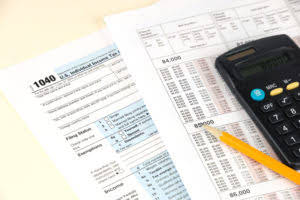
This includes financial records and accounts about the total cost of goods and services purchased by a company. Managerial accounting involves the compiling, analyzing, and interpretation of financial records for managers. It helps managers make informed internal decisions for the benefit of the company. When AMD sells finished goods, the cost of these goods is transferred out of finished goods inventory into the cost of goods sold account, which this company calls cost of sales, as many companies do. The operating portion of AMD’s income statement follows—again, all amounts are in millions. Notice that cost of sales appears below net sales and above all other operating expenses.
In this role, they analyze the internal financial processes of an organization and use that data to forecast, make suggestions, aid in decision-making, set budgets, and more. Financial accounting deals with the long-term financial decisions an organization may make. This differs from managerial accounting, which works with short-term and sometimes long-term goals that involve an organization’s internal financial processes. Both financial professions work with financial information in similar ways, but for different purposes and uses. Financial planning is a culmination of other techniques involved in achieving the internal goals of an organization.
Lean accounting (accounting for lean enterprise)
Unlike managerial accounting statements that are compiled as at when needed, financial accounting statements are compiled too late for use. Managerial accounting compiles, analyses, and interprets data with the main aim of rendering decisions affecting the future of a company easier to make. The final interpretations presented to internal administrators offer clues to making accurate decisions that affect the future operations of a business. Without prior managerial accounting, the business may decide to go for a cheaper product which may affect the quality of products and, ultimately, the profitability of sales. New college graduates’ starting salaries as cost accountants with large companies are projected to range between $43,000 and $53,750 in 2013. More-experienced cost accounting managers are projected to earn between $79,250 and $108,500 in 2013.
It compares the initial plan set out by a company with the current state of affairs, determining if business goals are being fulfilled or not. Under budgetary control, future financial needs are documented alongside their costs and arranged in an management accounting orderly manner for efficient business operations. Managing account receivable involves the process of ensuring that debtors pay their dues on time. It helps to prevent a company from running out of working capital to keep the business running.
Management accountants
For instance, ecommerce businesses may track average order size and revenue per visitor, while a manufacturing company would focus more on return on assets (ROA) and overall equipment effectiveness. Therefore, I decided to deliver all the knowledge that I have learned from my college. I have delivered all the knowledge in a simple and easy way by using practical life examples with numbers and figures. If the company expects an increase in customer loyalty beyond the break-even point, say by attracting 3,000 customers, the additional contribution margin becomes $16.67 per customer ($50,000 / 3,000). The management must evaluate whether the incremental revenue justifies the program’s cost, keeping in mind the net benefit and its impact on overall profitability. XYZ Electronics is considering implementing a loyalty program to enhance customer retention.